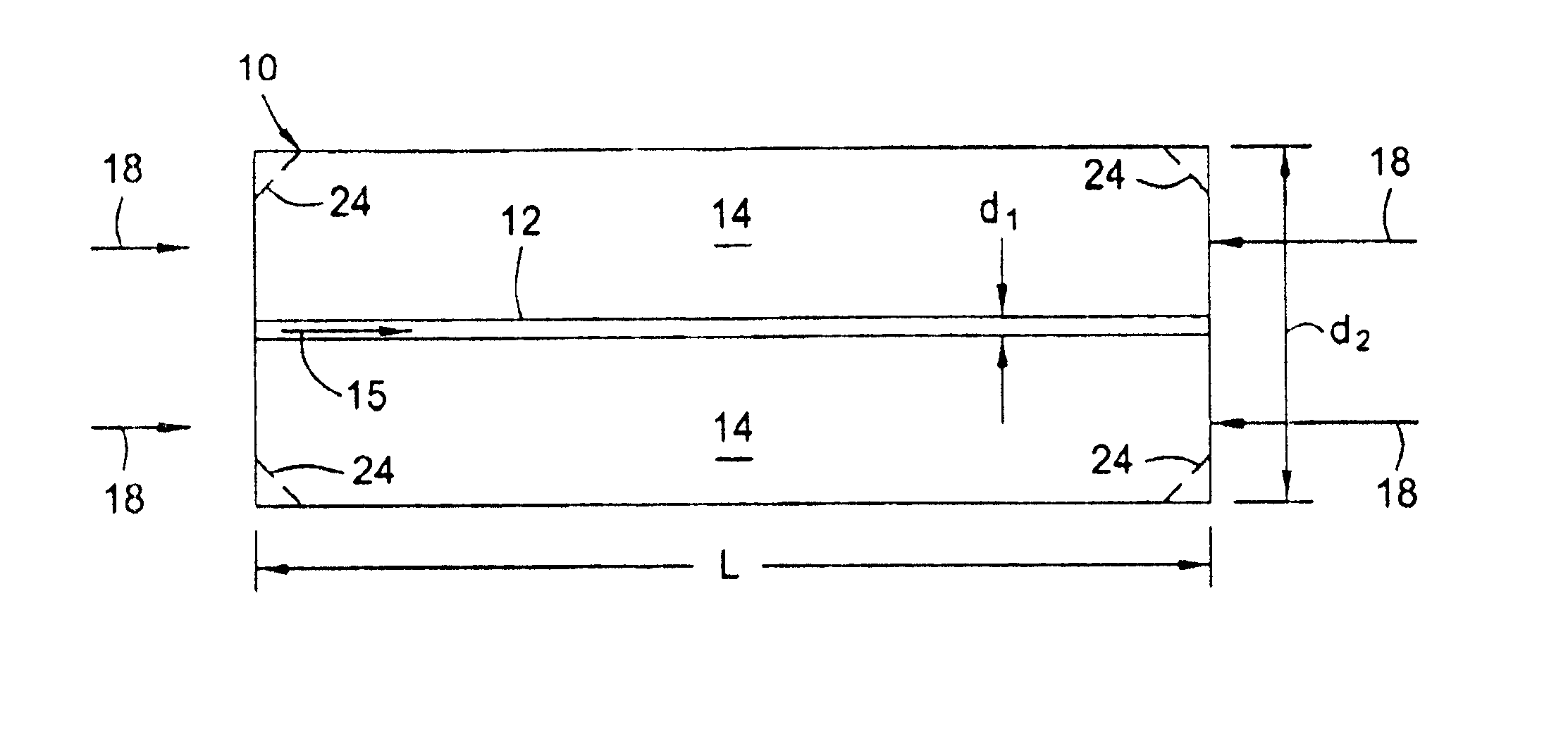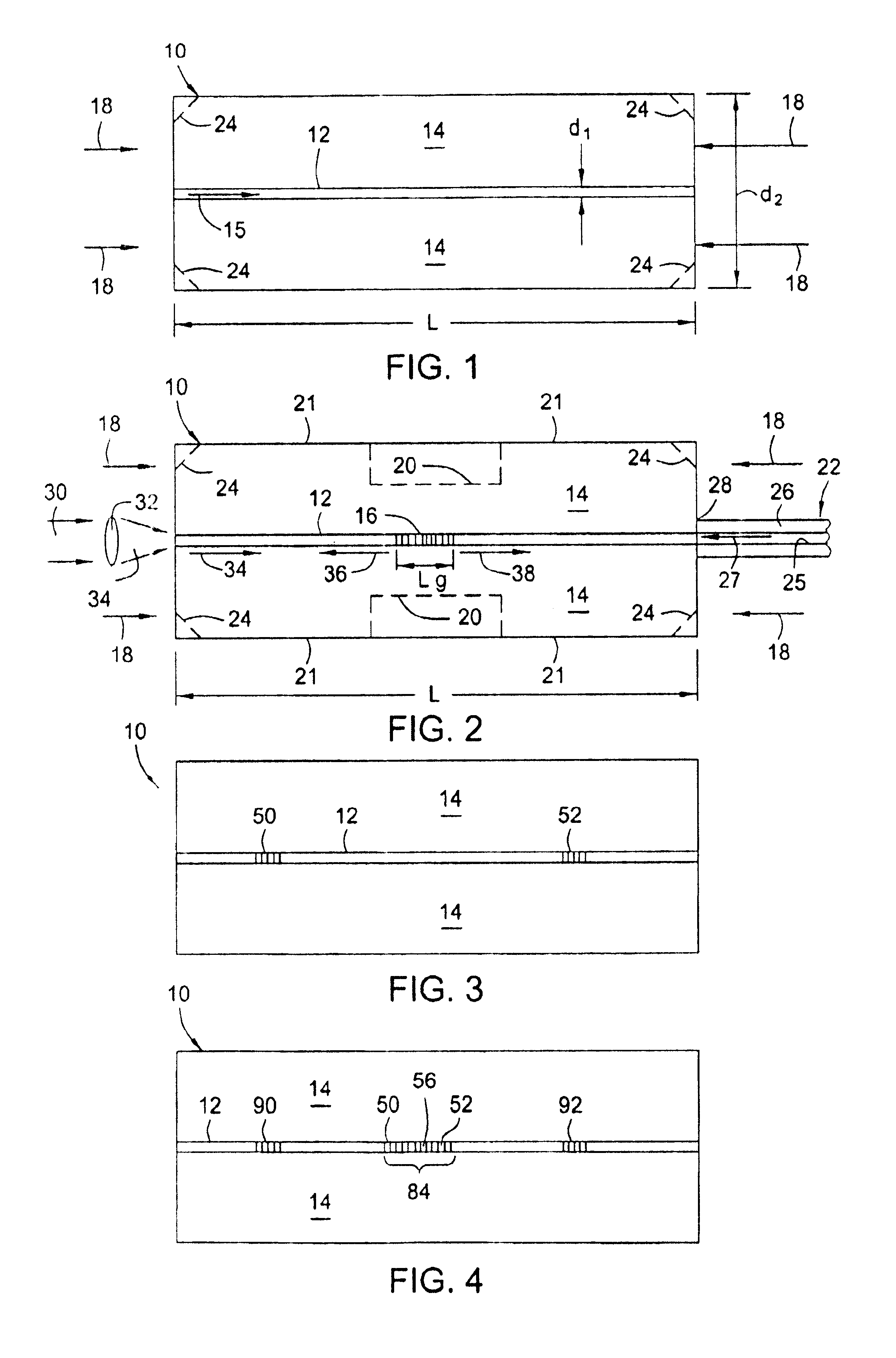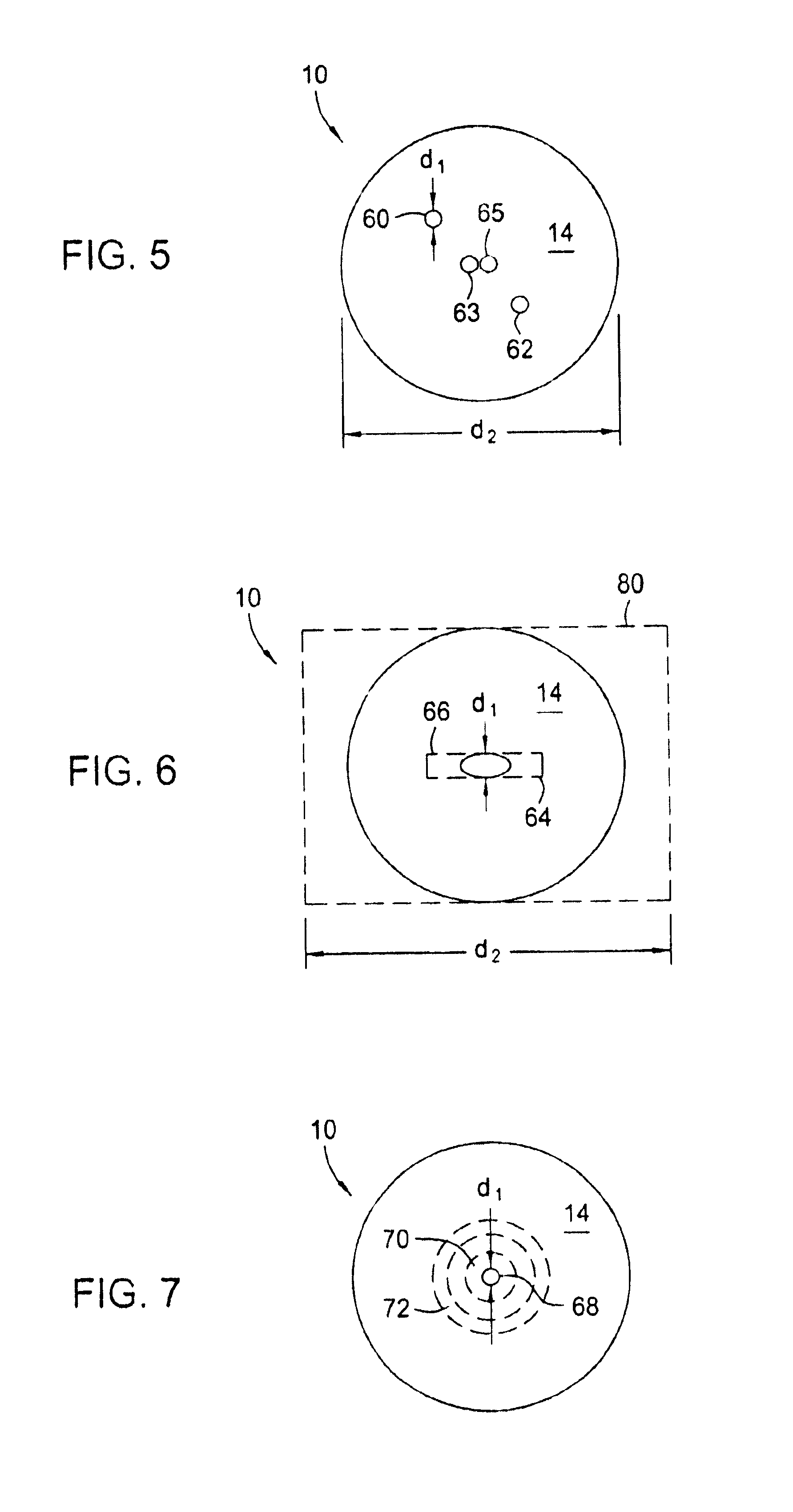Large diameter optical waveguide, grating, and laser
a technology of optical waveguides and lasers, applied in the field of optical waveguides, gratings and lasers, can solve the problems of reducing optical power, coupling, and creep between fibers and tubes, and achieve the effect of reducing core to cladding coupling and increasing optical power
- Summary
- Abstract
- Description
- Claims
- Application Information
AI Technical Summary
Benefits of technology
Problems solved by technology
Method used
Image
Examples
Embodiment Construction
[0025]Referring to FIG. 1, a large diameter optical waveguide 10, has at least one core 12 surrounded by a cladding 14. The waveguide 10 comprises silica glass (SiO2) based material having the appropriate dopants, as is known, to allow light 15 to propagate in either direction along the core 12 and / or within the waveguide 10. The core 12 has an outer dimension d1 and the waveguide 10 has an outer dimension d2.
[0026]The cladding 14 has an outer dimension d2 of at least about 0.3 mm and the core 12 has an outer dimension d1 such that it propagates only a few spatial modes (e.g., less than about 6). For example for single spatial mode propagation, the core 12 has a substantially circular transverse cross-sectional shape with a diameter d1 less than about 12.5 microns, depending on the wavelength of light. One standard telecommunications nominal core diameter is 9 microns (and outer waveguide diameter of 125 microns). The invention will also work with larger or non-circular cores that p...
PUM
 Login to View More
Login to View More Abstract
Description
Claims
Application Information
 Login to View More
Login to View More - R&D
- Intellectual Property
- Life Sciences
- Materials
- Tech Scout
- Unparalleled Data Quality
- Higher Quality Content
- 60% Fewer Hallucinations
Browse by: Latest US Patents, China's latest patents, Technical Efficacy Thesaurus, Application Domain, Technology Topic, Popular Technical Reports.
© 2025 PatSnap. All rights reserved.Legal|Privacy policy|Modern Slavery Act Transparency Statement|Sitemap|About US| Contact US: help@patsnap.com



